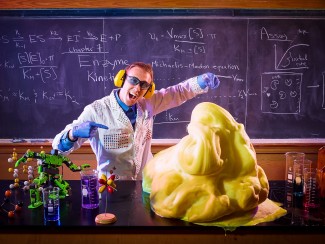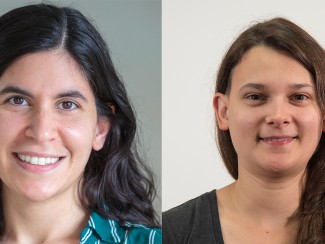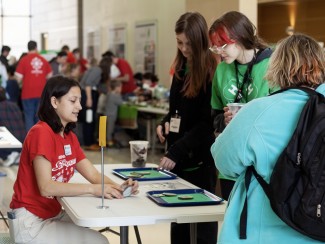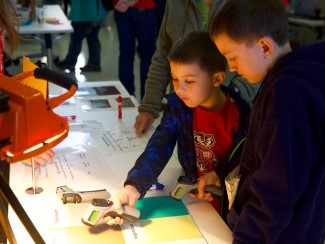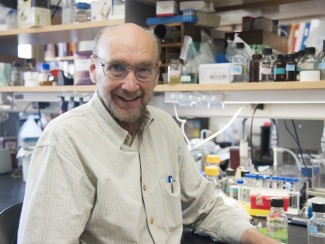
Kids gripped bubbling bags of water, plants, and yeast as part of a hands-on lesson in making biofuel.
“What crop do you think produces the most ethanol?” Wisconsin Energy Institute (WEI) graduate researchers Tessa Hoffman and Emily Ubbelohde asked.
Kids chose from cornmeal, cereal, sugar, switchgrass, and sawdust. They combined their chosen “crop” with yeast and water and waited for it to ferment, watching their bags expand and bubble as the yeast broke down sugars in the plant. This process produces ethanol, a type of biofuel, and is more difficult in some crops than others.
The experiment was part of UW Family Gardening Day, which gives families and community members the opportunity to explore everything plants, with tours and hands-on activities at four campus locations: Allen Centennial Gardens, the D.C. Smith Greenhouse, Steenbock Library, and WEI. Over 400 people visited WEI during this year’s event.
“Family Gardening Day’s focus is plants,” said Allison Bender, outreach coordinator with WEI. “Through engaging with these exploration stations, families can see how Wisconsin Energy Institute and the Great Lake Bioenergy Research Center scientists are using plants in creative ways to produce more sustainable alternatives to fossil fuels.”
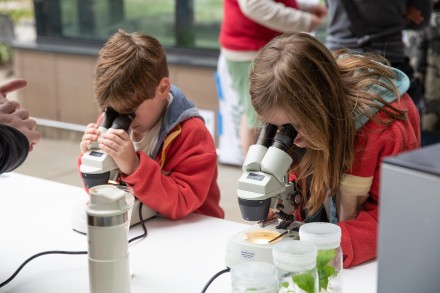
Families got to see through the eyes of researchers with a variety of hands-on exploration stations, investigating everything from monarchs and bees to microgrids and sustainable grasslands.
Microscopes offered an up-close look at plant roots. Students matched root lengths of Wisconsin perennial grasses, like switchgrass, to corn and Kentucky Bluegrass, learning that perennials and prairie plants have longer roots than corn and grass. Longer roots hold more carbon, making them better for bioenergy and helping restore soil health.
At the albedo station, families also saw how these native grasslands may have a cooling effect on the atmosphere. Albedo measures how much light is reflected by a surface. A higher albedo means more light is reflected. When light is absorbed rather than reflected by a landscape, it warms the soil and surrounding climate. Using a temperature sensor, families measured this effect on different landscapes, from asphalt and concrete to Kentucky Bluegrass, prairies, and snow. Snow, followed by natural prairies, had the lowest temperature, meaning it reflected the most light and had more cooling effects, while Kentucky Bluegrass and asphalt had the highest temperatures and absorbed more light.
Families also explored how plants can be used to create biodegradable products, even plastics. Rebecca Smith, GLBRC scientist highlighted the plethora of products that can be made from in her “Plant vs. Petroleum” matching game: biodegradable sponges from coconut skins, chapstick from beeswax, bamboo straws (sturdier than paper) and plastics from sugar cane.
“Here at GLBRC, we take apart the plant's cell wall and feed it to microbes, which produce plastic precursor molecules that we can string together to create biodegradable plastics,” Smith said. “Much of the research in this building works to find more sustainable options away from petroleum-based plastics.”
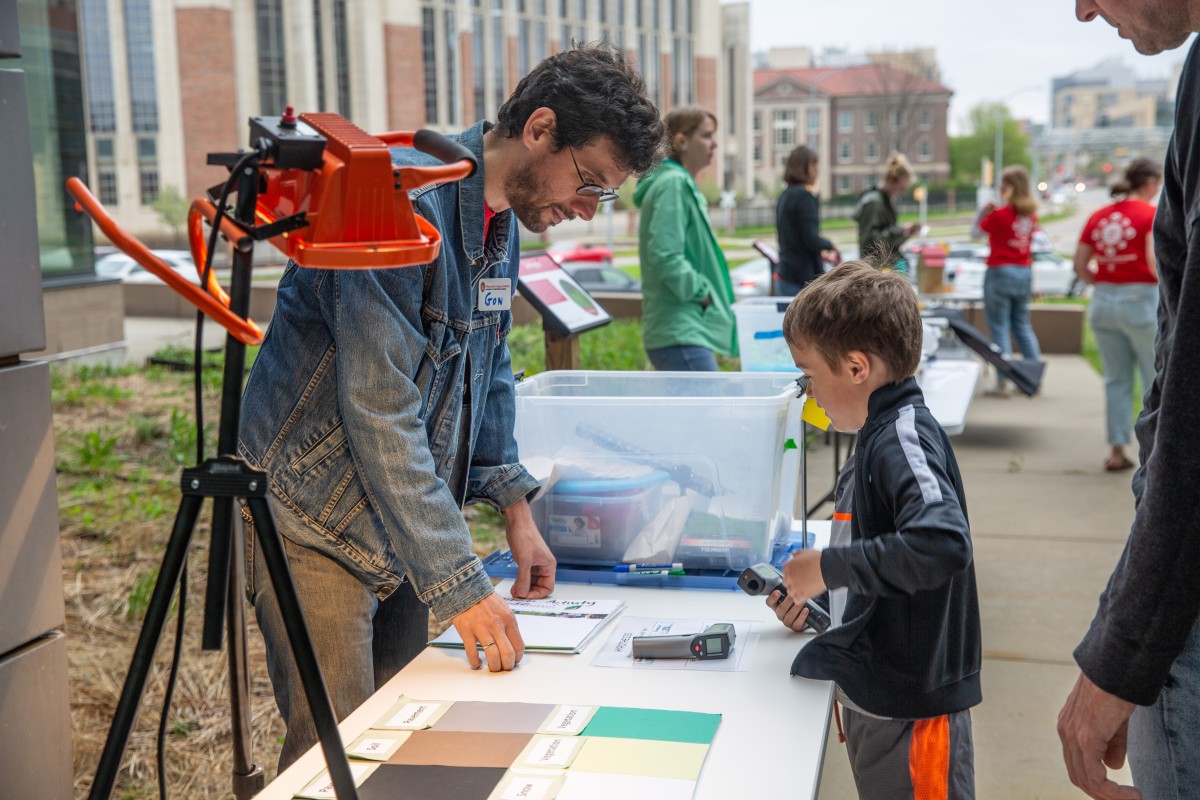
At the pipe cleaner polymer station, visitors saw how oil-based and plant-based plastics differ on a molecular level. They built model plant-based polymers, observing that they were often easier to break down from the oil-derived molecules. Such breakdown allows researchers to create biodegradable plastics.
Events like these provide an opportunity for GLBRC researchers to not only educate but to gather support for these initiatives. Smith hopes activities like these make others more conscious about the plastics they buy.
“Maybe participants will want to seek out biodegradable plastic utensils instead of plastic,” she said. “We need people on board and people willing to invest in this. People often think about where food comes from but what about plastics?”
As families finished the stations, they checked back to see the amount of ethanol in their fermentation bags. Fruity Pebbles Cereal and sugar, the two most popular choices, produced the most ethanol in comparison to cornmeal, sawdust, and switchgrass. Sugar is readily available to yeast in the cereal and sugar, making the conversion to ethanol quicker. However, yeast has a more difficult time accessing sugars from corn, switchgrass, and sawdust, giving families an insight into the challenges GLBRC researchers face when creating biofuels.
UW Family Gardening Day is just one of several annual opportunities where learners of all ages can meet with UW scientists to discover what is exciting and challenging about energy research. Visit energy.wisc.edu/events to learn about upcoming programs.

